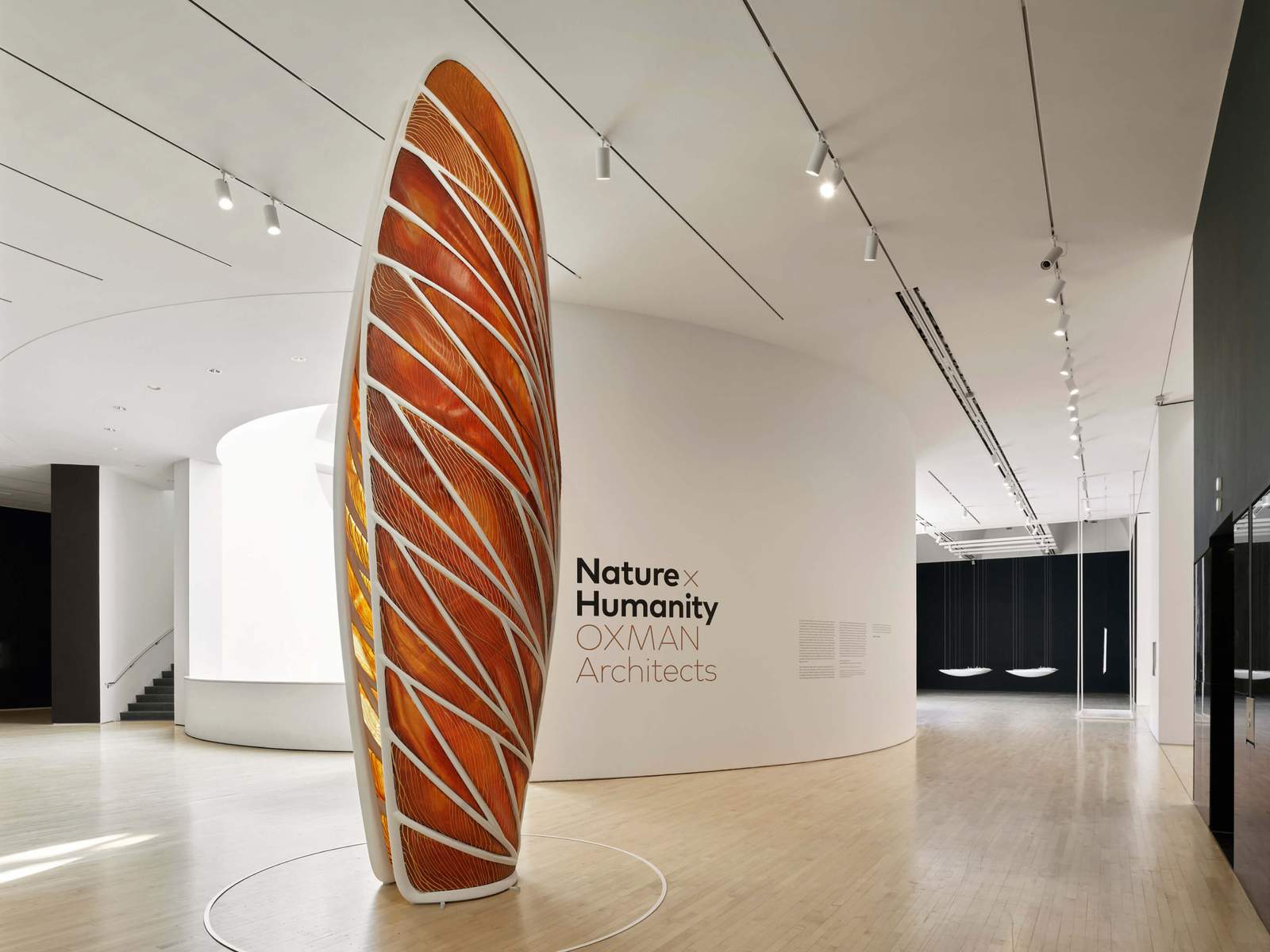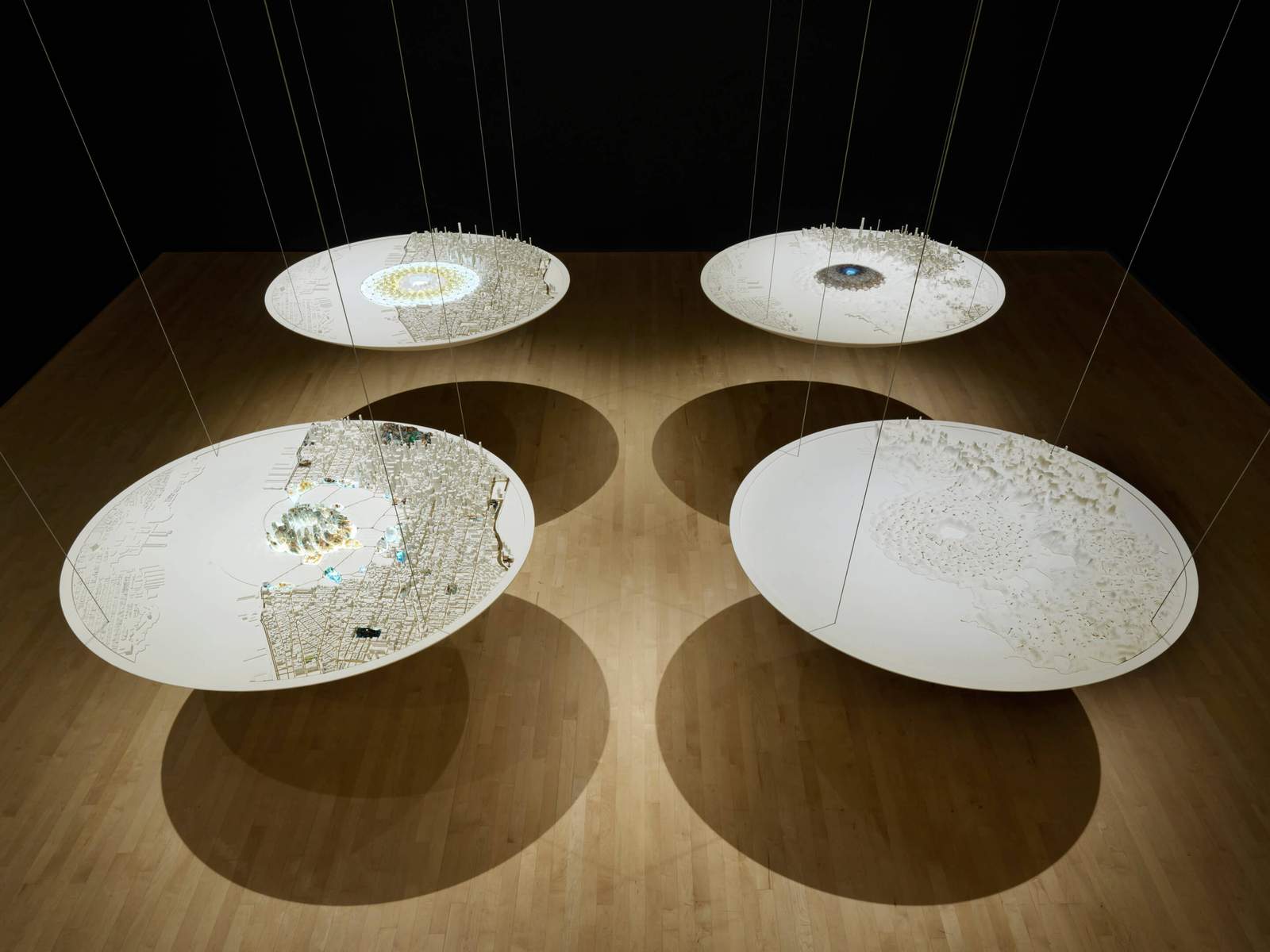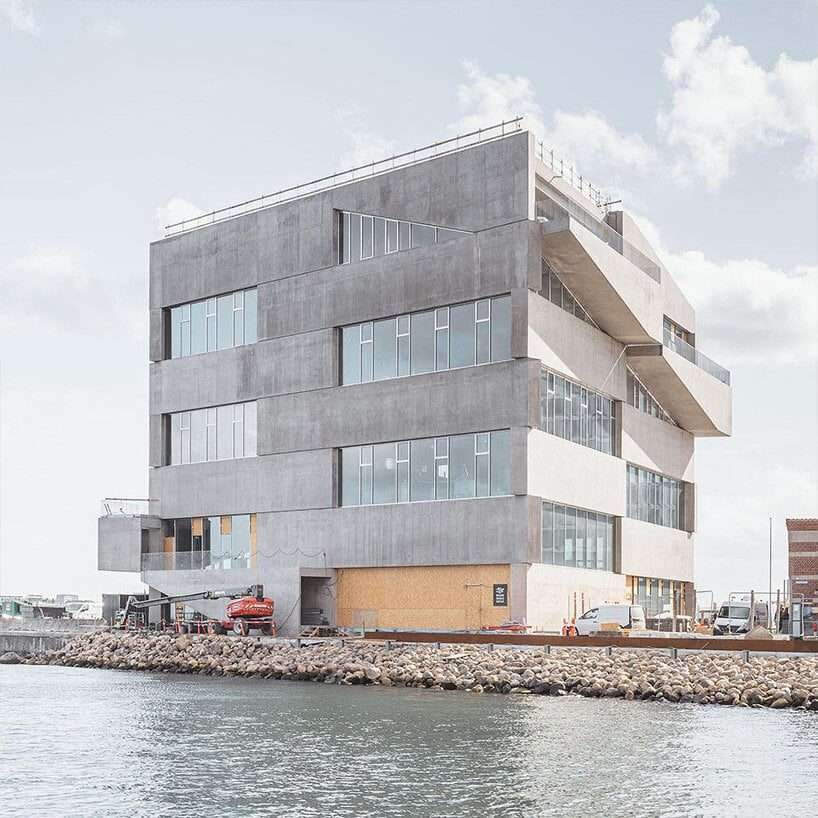Visitors to Nature × Humanity: Oxman Architects at the San Francisco Museum of Modern Art (SFMOMA) are promised an exhibition whose work focuses on environmental health, moving away from “centering human material wealth.” Looking to threats such as “nondegradable waste, depleted natural resources, climate change, and broken social, health, and economic systems,” the work of Neri Oxman seeks to center unwasteful, natural processes for an architectural biofuturism whose projects range from 3D-printed glass prototypes to models of Manhattan reconstructed after a catastrophic ecological disaster.
While some designs may be aesthetically pleasing, visitors critical of the labor and economic conditions that cause the ecological disaster Oxman identifies may find themselves unsatisfied. At a moment when criticisms of the deleterious nature of capitalism are at the forefront of conversations within architecture, the near-absence of these criticisms in the exhibition is all the more apparent. This is especially true considering that the show’s introduction calls Oxman’s opening of her practice OXMAN in New York City in 2020 as happening at “a momentous time of global reexamination of long-standing destructive norms.” As much as 2020 was a time of reexamination, provocations do not seem sufficient for those who feel the gravity of the climate crisis, which the exhibition itself urges in a number of moments.
Oxman’s inclination to abandon ship and plan for extraterrestrial life pins her futurism closer to that of Elon Musk in one part of the exhibition, yet the research into more efficient material use elsewhere begins to address solutions that could be viable in construction practices. Even in focusing on pieces in the exhibition that push material limits and leaving hopes of space or apocalyptic inevitability aside, the question of who will be building with these new materials, and under what conditions, remains a mystery to the visitor.

The exhibition is split into four sections, covering over a decade of Oxman’s work: Material x Fabrication; Scale x Structure; Program x Performance; Time x Place. Entering the exhibition, visitors encounter Aguahoja, a sculpture made with cellulose, chitin, pectin, and polymers on a steel base, whose vibrant brown and copper hues rise a striking sixteen feet into the air. The description for Aguahoja calls the piece a response to “current construction practices that are unsustainable,” and urges visitors to compare it to an identical piece that has been decomposing on the museum’s terrace for four years that’s feeding a seed bed. Visitors are then prompted to consider the following question: “What if there were policies around building lifecycles, tools for measuring material use, and, instead of landfills, urban-scale composting plots?”
The scalability of the materials used is not clear, but with Aguahoja one may imagine that there is a viable future in structures that decompose. This raises the question of how architects and planners—or vernacular builders—will design spaces with definite end dates that are not merely pavilion projects.
This gap between provocation and practice is evinced again and again in Nature × Humanity. Tools to advance ecological balance do exist and are widely used. However, visitors to the exhibition who are unfamiliar with the world of architectural practice would be given the impression that there are not designers who track, for example, the amount of embodied carbon saved in retrofitting a building compared to ground-up construction, or understand that municipalities already adapt energy codes around lifecycle considerations. These things may not be happening at a scale or pace that is commensurate with the climate crisis, but Oxman is not swooping into an untrodden landscape as the exhibition suggested.

Material x Fabrication may be the most promising part of the exhibition, as it explores how advances in fabrication methods may lead to greater efficiency and less waste. The research on display includes “reducing the number of disparate materials…meaning a single building material would at times need to be opaque for walls but transparent for windows, rigid for structure but flexible for form.” Exploration around stretching materials to new uses marks an optimistic approach to tackling facets of climate change and wasteful construction practices, and pieces like Fibonacci’s Mashrabiya and Aguahoja II Prototypes present interesting geometries made via methods like water-based digital fabrication. The emphasis on using renewable organic materials is an important step away from the reliance on products that use petrochemicals, making for what may be the most promising takeaway from Oxman’s research.
In ‘Scale x Structure’, questions over architectural form run amok, lacking a proper critique over their problematizations. The introduction to the section says that right angles in nature are a rarity, though have been useful in the built environment in the age of mass production, noting that “bends and waves often add tension and stability to structures while reducing the number of building materials and construction processes required, allowing more complexity in form and aesthetic to emerge.”

While experimentation with materials like beetroot, butterfly pea flower, powdered turmeric, and squid ink does yield an intriguing combination of red, yellow, blue, and green hues in Aguahoja II, Glass II—a curvilinear tower—fails to address many of the reasons skyscrapers come under fire. Apart from horrid labor practices that dominate the construction industry in many parts of the world, including on a number of notable high-rises, buildings from Manhattan’s Billionaire’s Row to Doha’s West Bay serve to pool capital at high rates of return and at the expense of building housing—and conserving energy for apartments seldom occupied. In Oxman’s future, towers may resemble more ‘natural’ designs, but one must ask if a tower like this will be put to better use. While Oxman may not be expected to solve macroeconomic problems through the design of a tower, falling back on the design bringing in a more promising future through its “wondrous” character falls flat amongst the urgency of the climate crisis as expressed in the exhibition’s introduction.
While ‘Material x Fabrication’ and ‘Scale x Structure’ are staged in a large, well-lit space, ‘Program x Performance’ is presented in a dimly-lit room with forest green walls, with objects more clearly arrayed in groups. This includes a set of totems, continuing Oxman’s previously controversial work with melanin, and Wanderers, “a collection of wearables for outer space.” Fashion for the extraterrestrial is a step away from the architectural considerations of the rest of the exhibition, but embraces the futurism surrounding the limits of the natural—in this case the human body. This line of thought is traced back to Oxman’s Vespers—the so-called death masks—that visually represent a person’s last breath. These three sets of works are meant to “prompt collaborations between Nature and culture to enhance a structure’s performance,” though one is left wondering whether Oxman seeks to make life better on earth, or to prepare for a future in outer space per the fantasies of the ultra-wealthy.

The exhibition finishes—or starts, depending how one maneuvers through—with an indulgence in large-scale destruction to design a future Manhattan that forms a symbiosis with nature. Man-Nahāta, as Oxman’s four models of Manhattan designed for Francis Ford Coppola’s self-funded upcoming film are called, depict Manhattan in the years 2100, 2200, 2300, and 2400. Projecting the levels of global sea level rise at each century, the four hundred years are depicted as a cycle: Emergence, Growth, Decay, and Rebirth. Urban-scale models depict a vibrant circular blob eating away at Manhattan each century, with the final model—the symbiosis—resembling a map of the ocean floor with ridges rather than buildings. While Oxman seems optimistic regarding this future, and the potential for the built and natural to live in harmony, the question of what happens to human life on the island in this transition—particularly for those who often do not have a choice but to move under economic and environmental duress—remains a mystery.
Maybe Oxman takes a mass scale of death—or at least the destruction and uprooting due to sea level rise—as a given. The description of current ecosystems being “imbalanced” may not raise many red flags, nor may the goal of “an urban plan that supports a mutually productive exchange between Nature and humanity,” but there still seems to be something indulgent in the destruction of the city. The bubble-form emerging next to Manhattan initially resembles something out of an apocalypse film, or Zamyatin’s We if one is to imagine it as a glass bubble, but either way as the centuries progress the form takes over the towers of Manhattan in Oxman’s models.
Man-Nahāta is described as a product of “deploying science and technology across material and urban scales,” the specifics of which are apparently unimportant, yet presuppose a catastrophic event that the architect will fix, per Coppola’s film. If it isn’t the architect atop Broadacre City, it may be the architect—and their technologies—atop Man-Nahāta that will give rise to a new society, at least according to Coppola and Oxman.
While Oxman identifies the problems resulting from capitalist modes of production, by not addressing them as such, she stops short from addressing fundamental systems that produce the current state of waste that she (correctly) identifies as a problem in architecture and elsewhere. The assumption that by returning to nature, or in pursuing a post-cataclysmic future from impending natural disasters, will result in a mode of production that solves the underlying causes of the problems Oxman has identified remains unconvincing. By eschewing questions of labor and capital Oxman cannot fully identify the climate problems that we are grappling with, leaving her provocations short of adequate regardless of any solutions.


